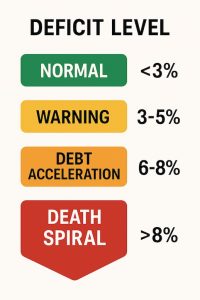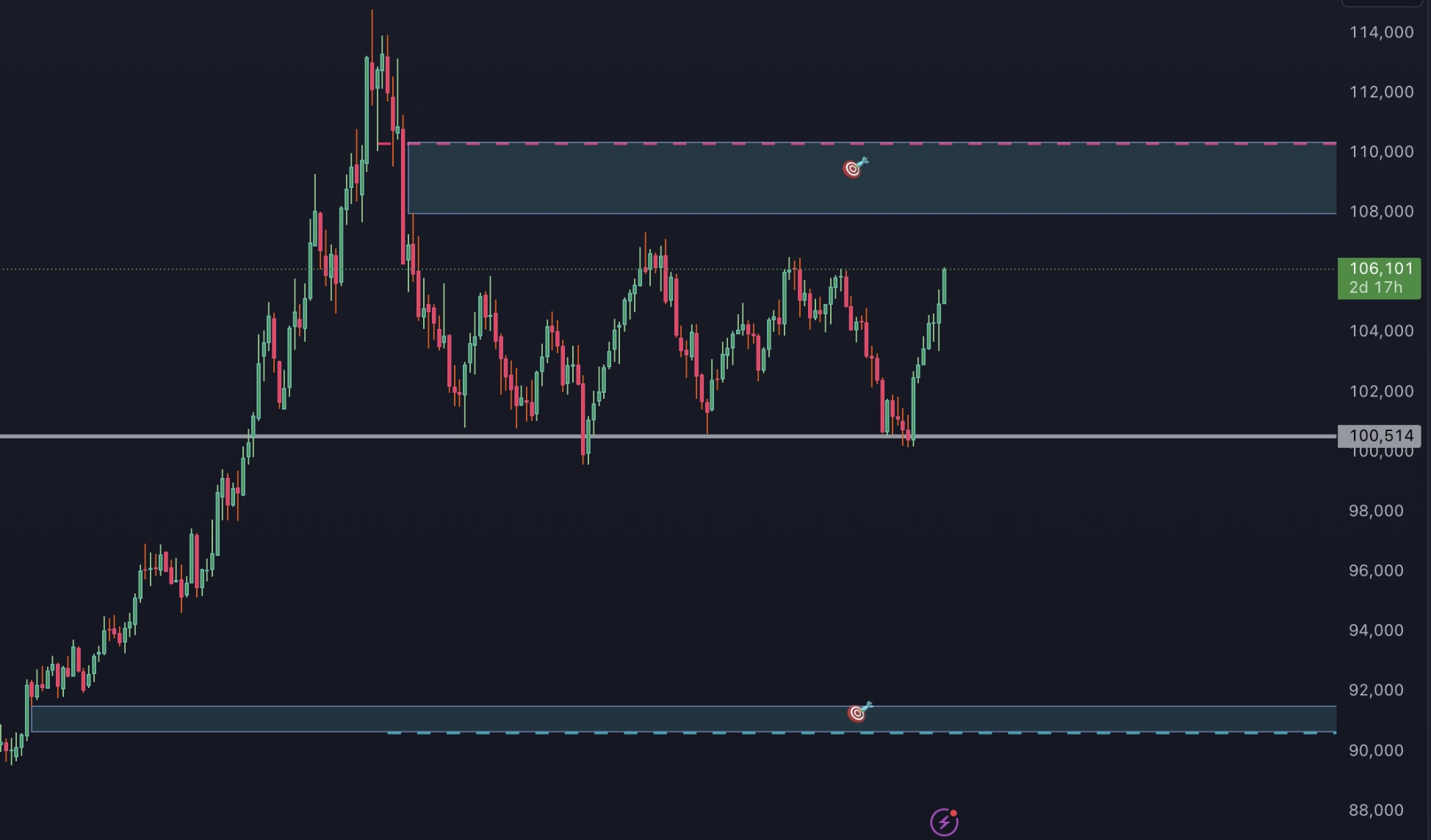Why a strong dollar isn’t great for the U.S. economy ( DXY )
In 2025, the U.S. is projected to collect $5.2 trillion in revenue, but spend over $7.1 trillion. That creates a deficit of nearly $1.9 trillion.In plain terms, the country is bleeding cash.

The deficit now sits at 6.2% of GDP — deep in the orange danger zone.
If it reaches 8%, the U.S. could enter what economists call a “debt death spiral,” where the country is stuck in unmanageable debt with no way out.
To avoid collapse, urgent steps must be taken:
Cut unemployment
Raise domestic tax revenues
Stop funding foreign aid programs, offshore foundations, and unchecked spending abroad
Fix the trade deficit
Reduce interest payments on the national debt
Today, let’s break down one of these points — DXY – the strength of the U.S. dollar.

First, we need to understand why a rising Dollar Index (DXY) can be a bad thing.
A stronger dollar can have several negative effects, both on the U.S. economy and globally:
-
Expensive Exports:
— A stronger dollar makes U.S. goods and services more expensive for international buyers. This can hurt U.S. exports as other countries’ products become cheaper alternatives. -
Rising Foreign Debt Burden:
— Many countries, companies, and even governments have debt denominated in dollars. When the dollar strengthens, it takes more of their local currency to pay off those debts, increasing financial strain and raising the risk of defaults, especially in emerging markets. -
Lower Profits for U.S. Exporters:
— American companies that earn a significant portion of their revenue overseas may see profits shrink as their products become pricier for foreign consumers. -
Hit to the Tourism Industry:
— A stronger dollar makes visiting the U.S. more expensive for tourists, which can reduce tourism revenue. -
Impact on Trade Balance:
— A strong dollar can widen the U.S. trade deficit because imports become cheaper and more attractive while exports fall. -
Pressure on Emerging Markets:
— For emerging economies, a stronger dollar makes it more expensive to import goods and pay off dollar-denominated debt, which can lead to inflation, economic instability, and even financial crises. -
Reduced Demand for Dollars:
— If the dollar becomes “too strong,” investors might temporarily shift to other currencies that offer better returns, reducing demand for the dollar. -
Commodity Price Pressure:
— Since commodities like oil and metals are priced in dollars, a stronger dollar often drives their prices down, hurting commodity-exporting countries.
Of course, these effects don’t all happen at once or with the same intensity. It depends on broader economic conditions, central bank policies, global trends, and more. But overall, a strengthening dollar can create both short-term and long-term challenges for different parts of the economy, both in the U.S. and abroad.

The chart shows the weekly timeframe.
If you look at the left side — that was during the bear market when DXY was rising.
I’ve marked two imbalance zones — one at the bottom and one at the top. These are two major “magnets.”
For over a year now, DXY has been moving sideways between 100–106.
A breakout above the 106 resistance would likely push DXY toward the upper imbalance zone around 110.
But considering that neither the world nor the U.S. really wants a “strong” dollar, it’s likely that Trump and his team will aim to manage the economy and bring DXY back into a healthier range.
If that happens, we could see DXY moving back down toward 100 — and even 91 later on — which would be a huge setup for the next BullRun.
Given how much the world (and even the U.S. itself) doesn’t really want a “strong” dollar, it’s fair to say that DXY pumping higher wouldn’t be in Trump’s best interest either.
They’ll likely try to carefully steer the economy to bring DXY back into a more reasonable range, which could be a major setup for the next Bull Run.


Comments are closed.